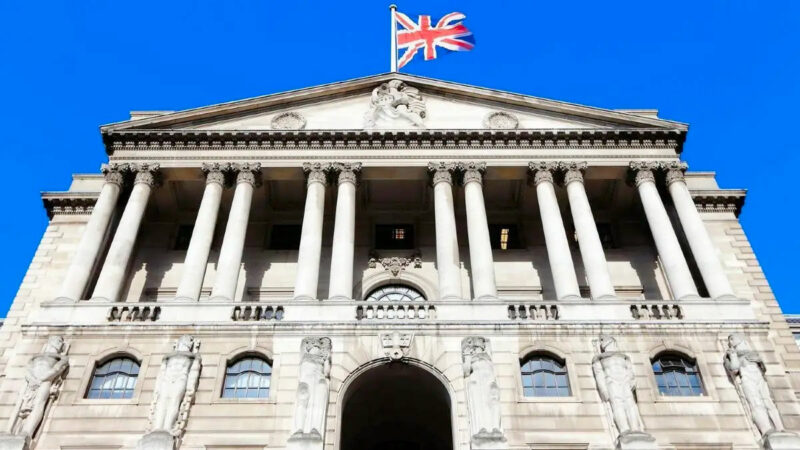The Bank of England (BoE) has announced a 0.25% rise in its policy interest rate, bringing it to 4.5%.
This marks the twelfth consecutive increase in UK interest rates, driven by persistent inflation that has consistently surpassed the central bank’s expectations. Headline Consumer Price Index (CPI) inflation remained above 10% in March, significantly higher than in mainland Europe or the US.
Inflation Forecast Revised Upwards
The Monetary Policy Report (MPR) was published alongside the latest decision, detailing the BoE’s current assessment of inflation and the economic outlook.
Notably, the BoE has revised its growth and inflation forecasts upwards. The GDP forecast for Q2 2024 has been revised from -0.3% to +0.9%, marking the largest upward revision in the history of the independent central bank. CPI inflation for the same period has been revised up from 1% to 3.4%.
High Fixed-Rate Mortgages and Rising Inflation
The BoE highlighted the high proportion of households on fixed-rate mortgages as an important factor in the current interest rate cycle.
This factor has reduced the impact of rising interest rates on the household sector compared to historical levels of interest rates. Additionally, food inflation and higher than expected manufacturing and supply costs are key contributors to the inflation rise.
What Does this Mean for UK Jewellers?
Rising interest rates can have both positive and negative implications for the UK jewellery industry.
Impact on Consumer Spending
As interest rates increase, the cost of borrowing rises. This can lead to a reduction in discretionary spending as consumers may have less disposable income.
This could potentially result in decreased demand for luxury goods, including jewellery. Consequently, jewellers might need to consider innovative marketing strategies to maintain sales, such as promoting affordable luxury items or offering interest-free finance options.
Effect on Gold Prices
Interest rate rises often result in higher gold prices, as we have seen over the last 18 months.
Increased costs for can have an immediate and obvious impact profitability if we try as an industry to not pass these higher costson to the consumer. On the other hand, higher gold prices can also increase the perceived value of gold jewellery, potentially making such items more appealing to customers.
Currency Fluctuations
Higher interest rates can strengthen the value of the pound, making imports cheaper.
As many UK jewellers rely on imported gems and precious metals, this could potentially offset some of the increased costs associated with higher gold prices.
Planning for the Future
Given the BoE’s forecast, the jewellery industry should prepare for potentially more interest rate hikes. Monitoring inflation and labour market data will be key, as these factors will influence the BoE’s future decisions.





